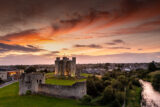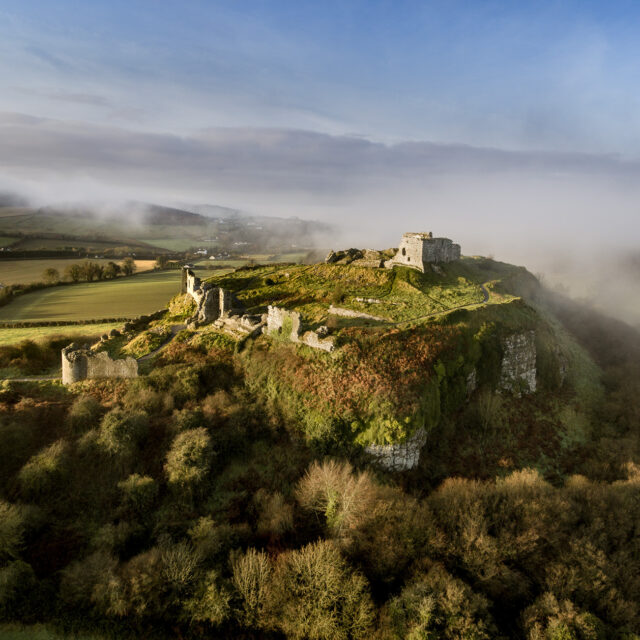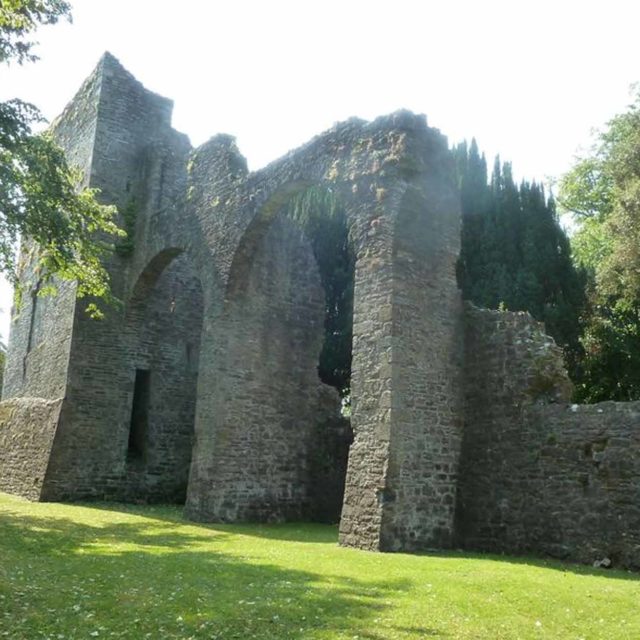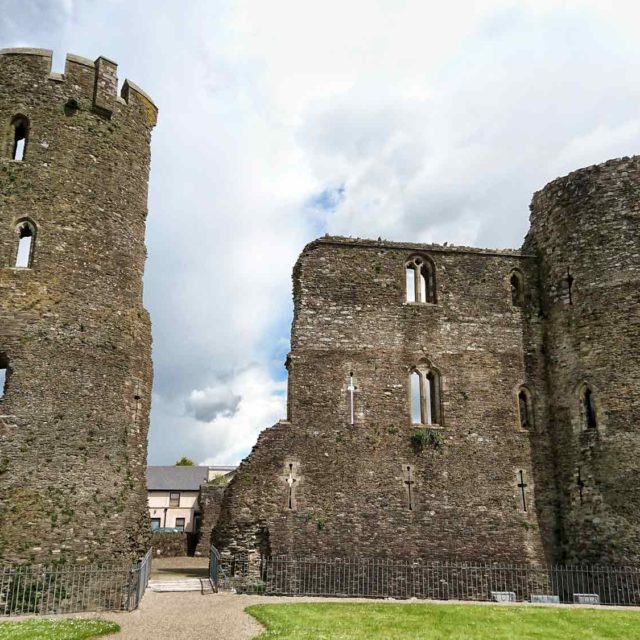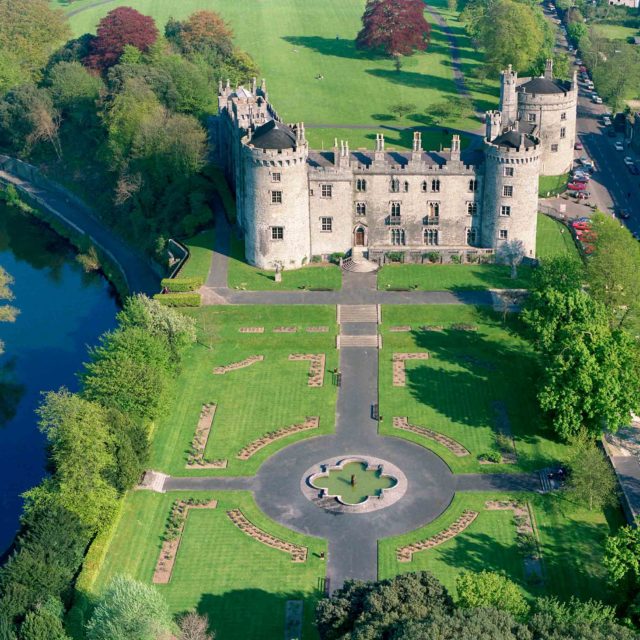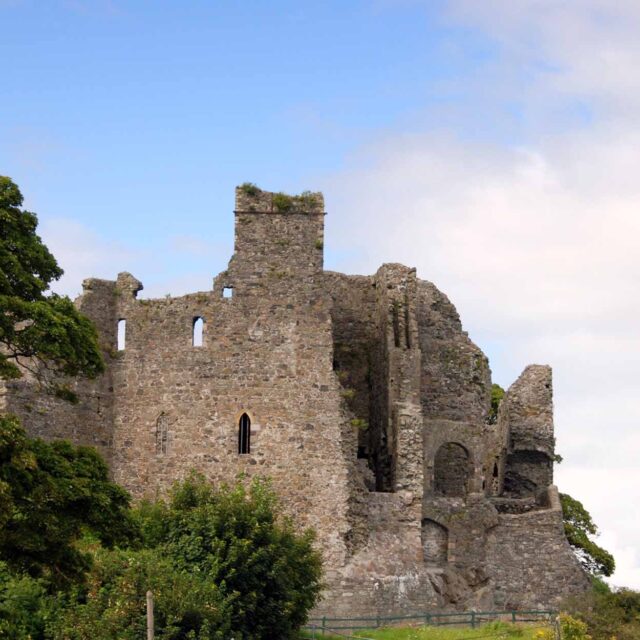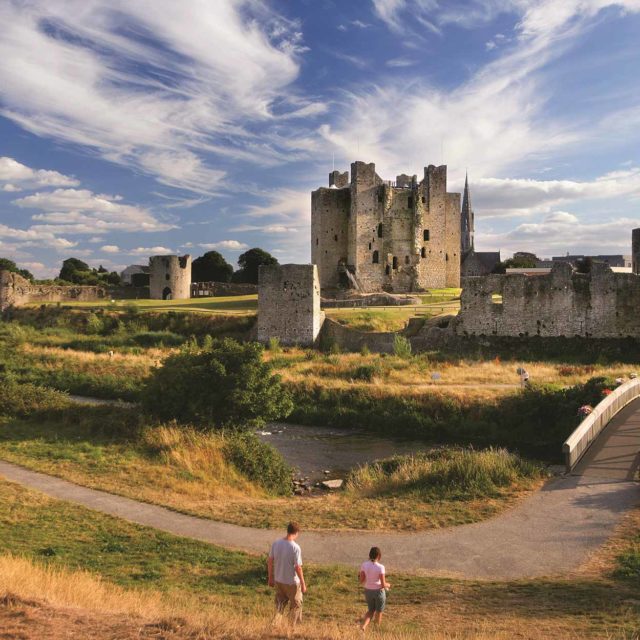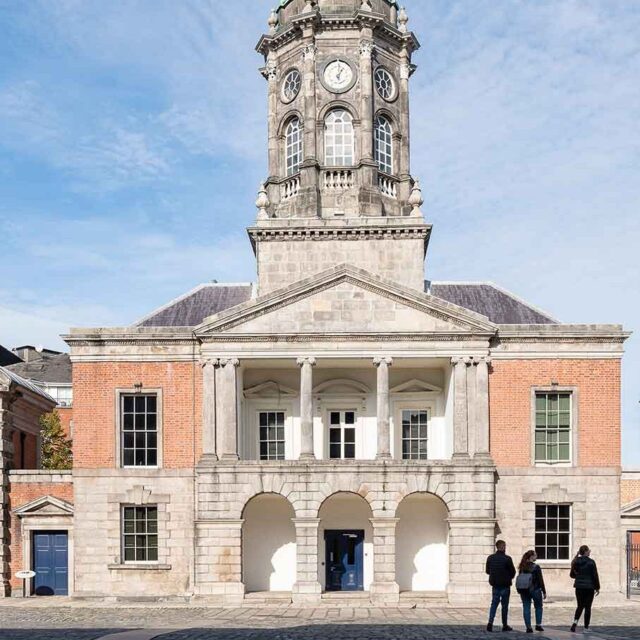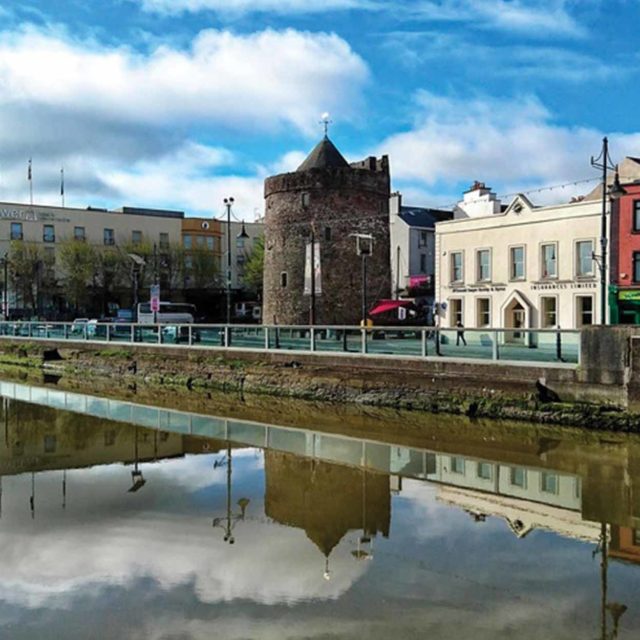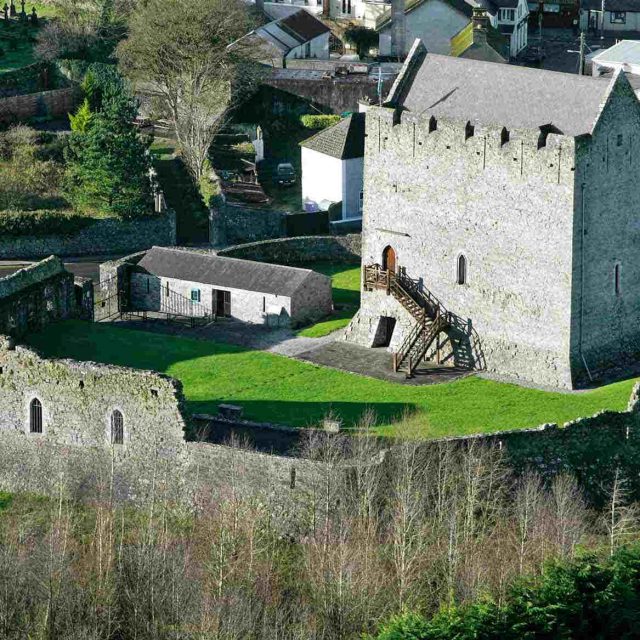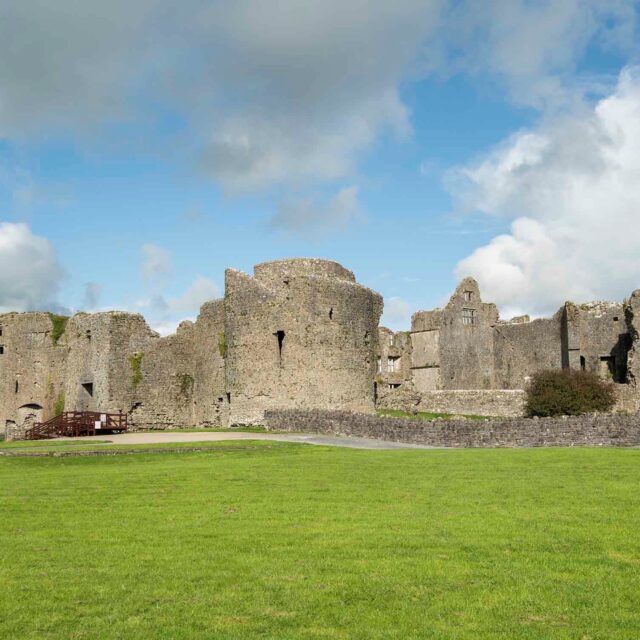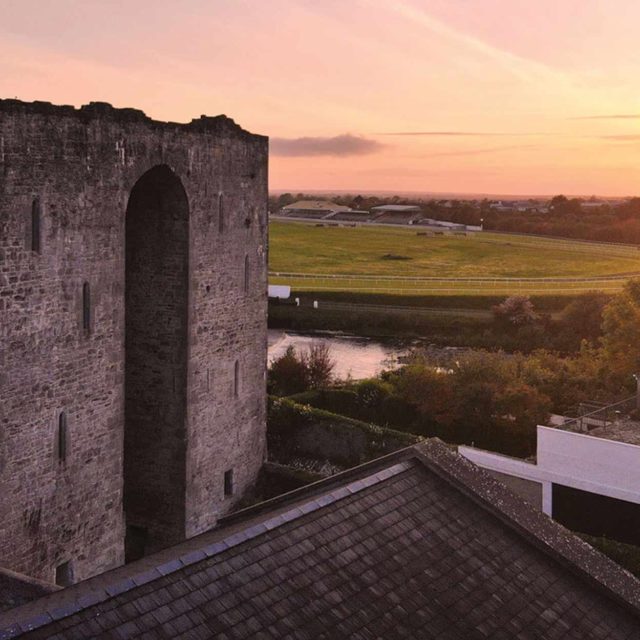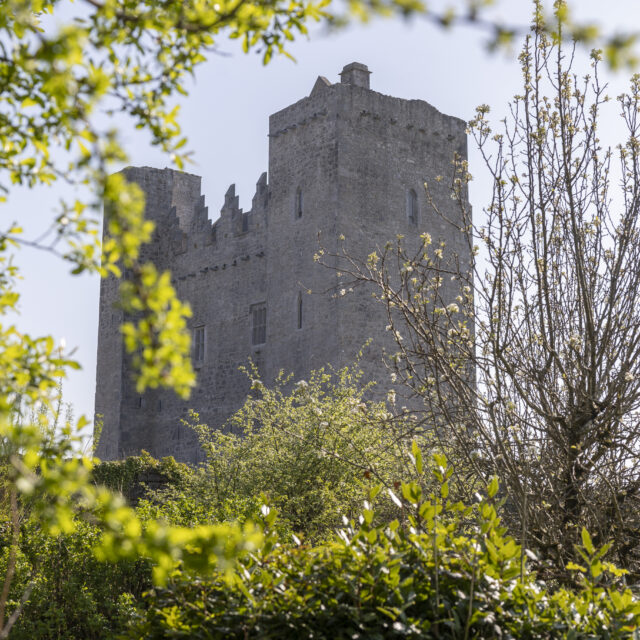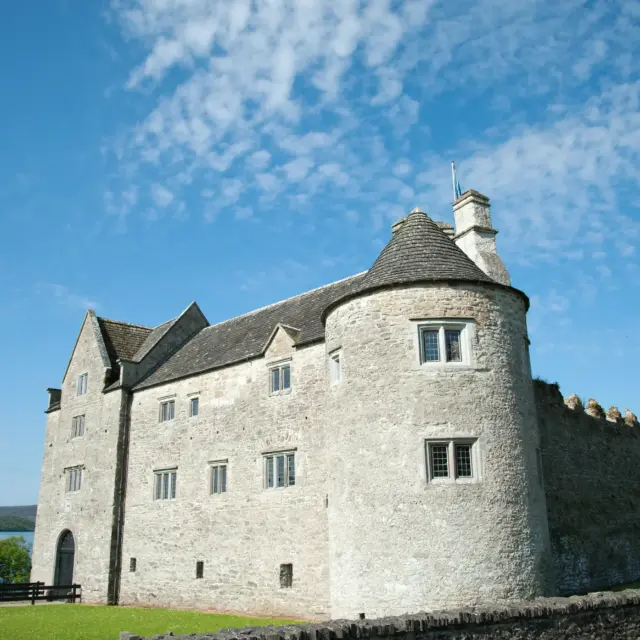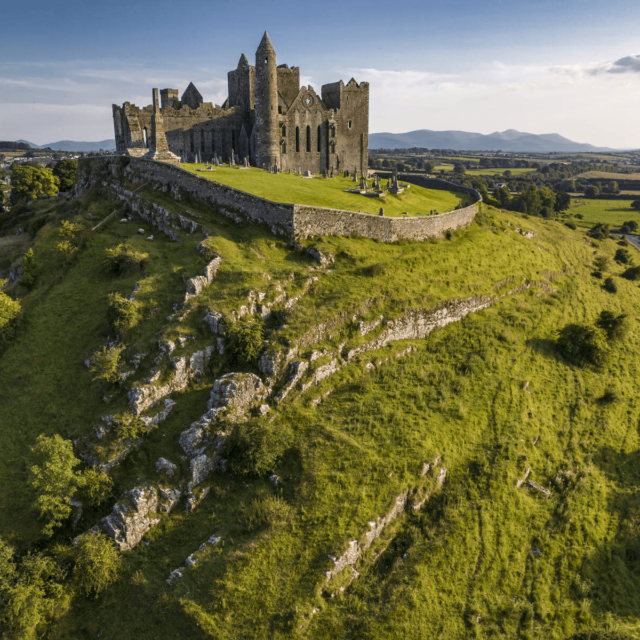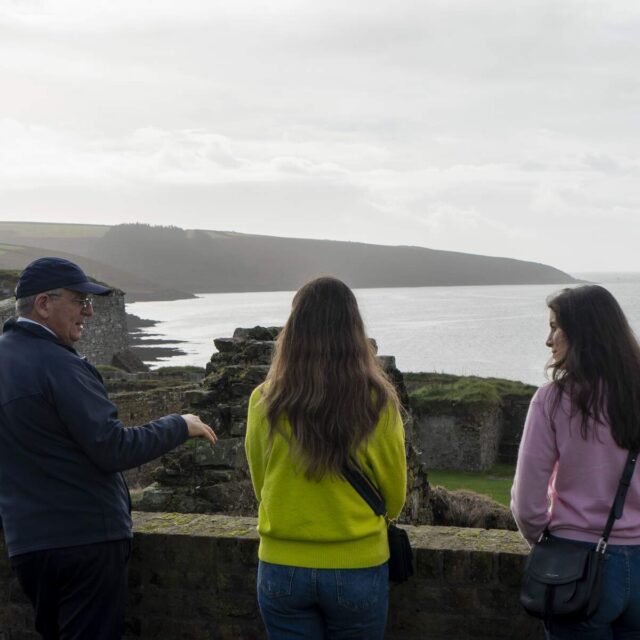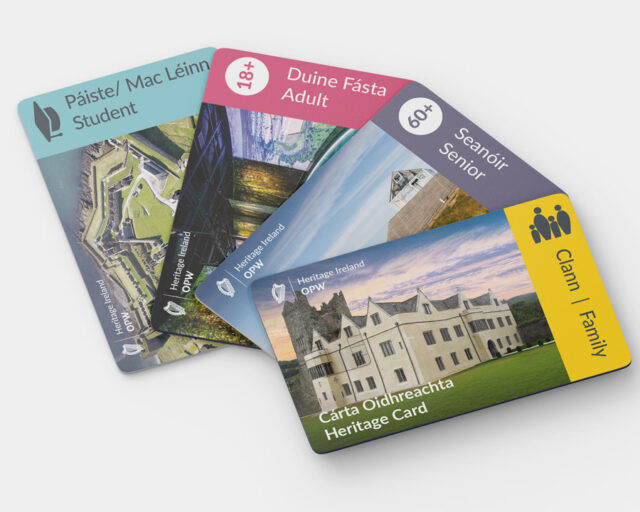Lá 1 — Strongbow and William Marshall
Carraig Dhún Másc
Rock of Dunamase
In 1170 when Aoife, daughter of the king of Leinster, Diarmuid Mac Murrough, married Strongbow, Dunamase was part of Aoife’s Dowry. It was part of their daughter Isabel’s dowry when she married the Earl of Pembroke, William Marshall.
The Rock of Dunamase became one of the most important Anglo-Norman fortifications in Ireland.
Caisleán Mhaigh Nuad
Maynooth Castle
Maurice Fitzgerald built Maynooth Castle in the 1180s on land that had been granted to him by Strongbow. The castle became the main residence of the Kildare Gerladines by the 14th century.
The tower was built in three phases, and is one of the largest of its kind. It was abandoned by the Fitzgerald’s circa 1656.
Caisleán Fhearna
Ferns Castle
Ferns was once the political base for the king of Leinster, Diarmaid Mac Murrough, before it came into the hands of William Marshall.
Marshall built Ferns Castle in the early 1200s.
It now houses the Ferns Tapestry, which details the history of Ferns.
Caisleán Chill Chainnigh
Kilkenny Castle
In 1172, upon taking possession of the land, Strongbow had a motte built in Kilkenny town. William Marshall had Kilkenny Castle built on the same site circa 1204. It was the first stone castle to exist within the town, and increased Kilkenny’s importance.
In 1391 the castle was bought by James Butler, the 3rd Earl of Ormond, and its history is still very much associated with the Butler family today.
